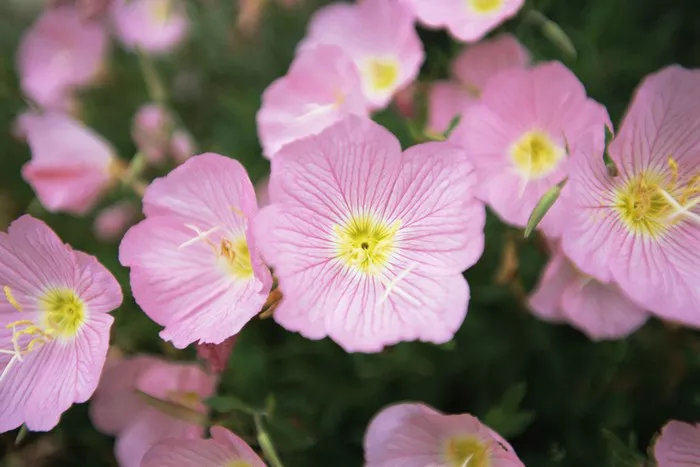In the realm of edible flowers, primrose stands out as an intriguing and delightful option. With its delicate appearance and subtle flavor, the primrose offers not only aesthetic appeal but also potential nutritional benefits. In this article, we delve into the edibility, nutritional value, and culinary potential of primrose flowers, providing insights and inspiration for incorporating these botanical wonders into your culinary repertoire.
Edibility of Primrose Flowers
Primrose flowers, belonging to the genus Primula, encompass various species that are widely distributed across temperate regions. While not as commonly consumed as some other edible flowers, such as roses or violets, certain species of primrose are indeed edible and have been used in culinary practices for centuries.
It’s important to note that not all primrose species are safe for consumption. Some varieties contain compounds that can be toxic if ingested, so it’s crucial to identify the specific species intended for culinary use. The most commonly cultivated edible species include Primula vulgaris (common primrose), Primula veris (cowslip or cowslip primrose), and Primula elatior (oxlip). These species are generally considered safe to eat when consumed in moderation and prepared properly.
When selecting primrose flowers for consumption, choose blooms that are fresh, vibrant, and free from pesticides or other chemical residues. Avoid flowers that appear wilted or damaged, as they may not be suitable for consumption.
Nutritional Value of Primrose Flowers
Primrose flowers not only add visual appeal to dishes but also contribute a modest array of nutrients. While they are not a significant source of macronutrients like protein, fat, or carbohydrates, they do offer essential vitamins, minerals, and antioxidants that can enhance the nutritional profile of a meal.
One of the notable nutritional components of primrose flowers is their vitamin C content. Vitamin C is an essential nutrient with antioxidant properties, which can help protect cells from oxidative damage and support immune function. Incorporating primrose flowers into your diet can contribute to your daily intake of vitamin C, albeit in small amounts.
In addition to vitamin C, primrose flowers contain trace amounts of other vitamins and minerals, including vitamin A, calcium, and potassium. While these nutrients may not be present in large quantities, they still contribute to the overall nutritional value of the flowers.
Beyond vitamins and minerals, primrose flowers also contain phytochemicals such as flavonoids and phenolic compounds, which have antioxidant and anti-inflammatory properties. Including foods rich in phytochemicals, like primrose flowers, in your diet may offer various health benefits, including reduced risk of chronic diseases and improved overall well-being.
Culinary Inspiration: Recipes Featuring Primrose Flowers
Now that we’ve explored the edibility and nutritional value of primrose flowers, let’s delve into the exciting realm of culinary creativity. Incorporating primrose flowers into your cooking opens up a world of possibilities, from elegant salads to decadent desserts. Here are a few inspired recipes to spark your imagination:
1. Primrose Petal Salad with Citrus Vinaigrette:
Ingredients:
- Fresh mixed greens (such as arugula, spinach, or spring mix)
- Primrose petals (washed and dried)
- Cherry tomatoes, halved
- Sliced cucumber
- Sliced red onion
- Feta cheese, crumbled
For the Citrus Vinaigrette:
- Freshly squeezed orange juice
- Lemon juice
- Extra virgin olive oil
- Honey
- Salt and pepper to taste
Instructions:
- In a large bowl, combine the mixed greens, cherry tomatoes, cucumber, red onion, and primrose petals.
- In a separate small bowl, whisk together the citrus juices, olive oil, honey, salt, and pepper to make the vinaigrette.
- Drizzle the vinaigrette over the salad and toss gently to coat.
- Sprinkle crumbled feta cheese over the top and serve immediately.
2. Primrose Infused Honey:
Ingredients:
- Fresh primrose flowers (washed and dried)
- Honey (preferably raw)
Instructions:
- Fill a clean, dry jar with primrose flowers, leaving some space at the top.
- Pour honey over the flowers until they are completely submerged.
- Seal the jar tightly and let it sit in a cool, dark place for at least two weeks to allow the flavors to infuse.
- Strain the honey through a fine-mesh sieve or cheesecloth to remove the flowers, then transfer the infused honey to a clean jar for storage.
- Use primrose-infused honey as a sweetener for tea, drizzle it over yogurt or oatmeal, or incorporate it into baked goods for a delicate floral flavor.
3. Primrose Flower Cupcakes:
Ingredients:
- Cupcake batter of your choice (vanilla or lemon works well)
- Primrose petals (washed and dried)
- Buttercream frosting
Instructions:
- Prepare your favorite cupcake batter according to the recipe instructions.
- Fill cupcake liners with batter and bake according to the recipe.
- Once the cupcakes have cooled completely, frost them with buttercream frosting.
- Gently press primrose petals into the frosting to decorate each cupcake.
- Serve and enjoy these delightful floral treats at your next gathering or special occasion.
These recipes are just a starting point for incorporating primrose flowers into your culinary endeavors. Feel free to experiment with different dishes and preparations to discover the endless possibilities that these delicate blooms offer.
Conclusion
Primrose flowers offer not only visual beauty but also culinary potential and nutritional value. When sourced and prepared safely, they can elevate dishes with their subtle flavor and delicate appearance. Whether used as a garnish, infusion, or focal ingredient, primrose flowers invite creativity and exploration in the kitchen, making them a delightful addition to any culinary repertoire. So go ahead, embrace the beauty and flavor of primrose flowers, and let your culinary imagination bloom.


